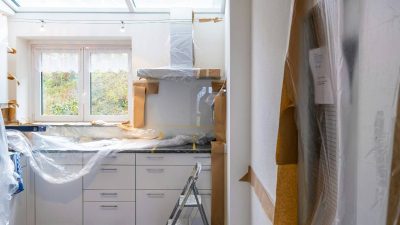Tenement maintenance and repair management can be hard to navigate and requires the co-operation of multiple people. Working well with owners is paramount to having a well-maintained tenement building that is warm and dry. With the right knowledge, such as how to contact owners, flat owners’ responsibilities, and how to best approach common repairs, this process can be made easier and more straightforward.
Contacting owners
The first step to working well with owners is to ensure you take all reasonable steps to get in touch with them and stay in contact when necessary. Under the Tenements Act, owners may contact each other by post, another delivery method, or electronic communication.
The type of flat owner will determine how best to contact them. For example, if they are an owner-occupier, posting a letter through their letterbox or introducing yourself in-person if you also live in the building may be suitable; however, if the owner is a landlord and uses a letting agent, you should contact the letting agent.
If you are struggling to contact an owner who is a landlord, you may be able to search for their details on the Register of Private Landlords using either their landlord registration number or the postcode of the rental property.
For shops, you can use the Scottish Assessors website to find the names of shop owners and their tenants.
If you suspect a property might be empty, you can use the Land Register to find the name of the current owner or contact your local council’s Empty Homes Officer. If your council does not have an Empty Homes Officer, get in touch with the Scottish Empty Homes Partnership.
You can also contact the private sector housing team at your local council if you are trying to carry out a common repair and need a co-owner’s details; they may be able to send a message to the person registered as the owner on the Council Tax Register.
It’s a good idea to keep a list of owners and their contact details, including email addresses and phone numbers if possible, so that you can get in touch with them about repairs and maintenance as needed.
Flat owners’ responsibilities
It is also important to know the responsibilities of flat owners in Scotland, so that you can explain why you are contacting your co-owners.
A good place to start is to obtain a copy of your title deeds. These will set out the rules that apply to your building. Many title deeds are now computerised and can be found in the Land Register of Scotland. If a property is registered in the Land Register, a copy of the title deeds can be purchased for a nominal fee.
Additionally, the Duty to Maintain is a powerful legal protection for your building which states that every flat owner has a responsibility to maintain the parts of the tenement that provide support and shelter. This can include fixing a leaky roof, ensuring the foundations are standing strong, or replacing rotten structural timbers. If facing opposition from owners to carry out necessary repairs, you can remind owners of this legal duty.
Following proper procedures
When it comes to organising repairs, knowing how to follow proper procedures is vital. This includes knowing when to contact owners to ensure they are informed of a repair and any subsequent decisions. Once a repair has been identified, take all reasonable steps to contact owners and inform them. Ensure that adequate time is given for owners to respond.
It’s important that throughout the repair process all owners are kept up to date with its progress and have the opportunity to take part in owners’ meetings and votes. This is where having an up-to-date list of contact details is very useful.
If you notify an owner of a repair or a decision by post, make sure to keep copies of the letters sent and obtain proof of postage.
Approach with care and understanding
The common repairs process can be challenging, and sometimes stressful. When approaching owners about repairs, not only is it important to make sure you have knowledge of owners’ responsibilities and proper procedures, but also that you approach the subject with care and understanding.
Individuals’ personal and financial situations can be diverse and not everyone will be in a position to contribute to the repairs process. Your local council may be able to help with financial assistance if they have a Missing Shares scheme. Alternatively, if an owner cannot pay, the other owners may decide to split the remaining share between them where feasible to complete the repair.
If you face opposition and an owner is refusing to pay for a repair, again your local council may be able to assist you. If they cannot help, you may need to take legal action. Before doing so, consider whether community mediation may be an effective solution. Mediation can be a chance to meet with owners on neutral ground and resolve a dispute.
Owners’ associations
Finally, to maintain good relations with your co-owners, consider forming an owners’ association. An owners’ association is a group of owners who come together to make decisions about the maintenance and management of their building. It can improve communication, streamline decision-making, and simplify paying for common repairs by providing a single source of contact. To learn more about owners’ associations check out this article.











